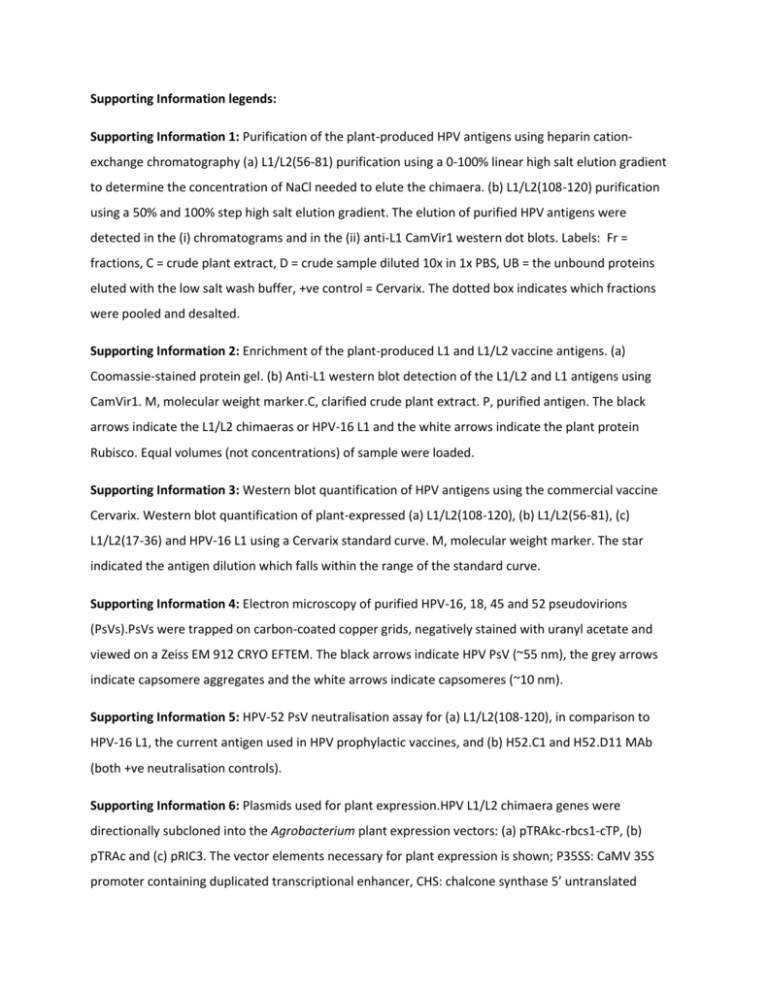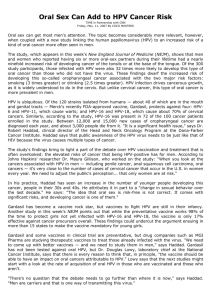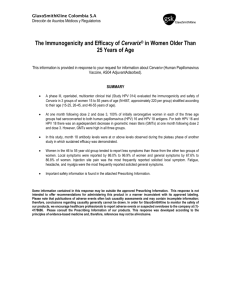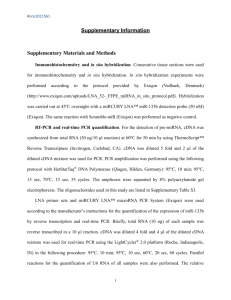pbi12089-sup-0007-Legend
advertisement

Supporting Information legends: Supporting Information 1: Purification of the plant-produced HPV antigens using heparin cationexchange chromatography (a) L1/L2(56-81) purification using a 0-100% linear high salt elution gradient to determine the concentration of NaCl needed to elute the chimaera. (b) L1/L2(108-120) purification using a 50% and 100% step high salt elution gradient. The elution of purified HPV antigens were detected in the (i) chromatograms and in the (ii) anti-L1 CamVir1 western dot blots. Labels: Fr = fractions, C = crude plant extract, D = crude sample diluted 10x in 1x PBS, UB = the unbound proteins eluted with the low salt wash buffer, +ve control = Cervarix. The dotted box indicates which fractions were pooled and desalted. Supporting Information 2: Enrichment of the plant-produced L1 and L1/L2 vaccine antigens. (a) Coomassie-stained protein gel. (b) Anti-L1 western blot detection of the L1/L2 and L1 antigens using CamVir1. M, molecular weight marker.C, clarified crude plant extract. P, purified antigen. The black arrows indicate the L1/L2 chimaeras or HPV-16 L1 and the white arrows indicate the plant protein Rubisco. Equal volumes (not concentrations) of sample were loaded. Supporting Information 3: Western blot quantification of HPV antigens using the commercial vaccine Cervarix. Western blot quantification of plant-expressed (a) L1/L2(108-120), (b) L1/L2(56-81), (c) L1/L2(17-36) and HPV-16 L1 using a Cervarix standard curve. M, molecular weight marker. The star indicated the antigen dilution which falls within the range of the standard curve. Supporting Information 4: Electron microscopy of purified HPV-16, 18, 45 and 52 pseudovirions (PsVs).PsVs were trapped on carbon-coated copper grids, negatively stained with uranyl acetate and viewed on a Zeiss EM 912 CRYO EFTEM. The black arrows indicate HPV PsV (~55 nm), the grey arrows indicate capsomere aggregates and the white arrows indicate capsomeres (~10 nm). Supporting Information 5: HPV-52 PsV neutralisation assay for (a) L1/L2(108-120), in comparison to HPV-16 L1, the current antigen used in HPV prophylactic vaccines, and (b) H52.C1 and H52.D11 MAb (both +ve neutralisation controls). Supporting Information 6: Plasmids used for plant expression.HPV L1/L2 chimaera genes were directionally subcloned into the Agrobacterium plant expression vectors: (a) pTRAkc-rbcs1-cTP, (b) pTRAc and (c) pRIC3. The vector elements necessary for plant expression is shown; P35SS: CaMV 35S promoter containing duplicated transcriptional enhancer, CHS: chalcone synthase 5’ untranslated region, pA35S: CaMV 35S polyadenylation signal for foreign gene expression, ColE1ori: E. coli origin of replication, RK2ori: Agrobacterium origin of replication, bla: ampicillin / carbenicillin-resistance gene, and LB/RB: left and right borders for T-DNA integration. The pTRAc vector contains SAR: tobacco Rb7 scaffold attachment regions flanking the expression cassette. In addition, the pTRAkc-rbcs1-cTP vector contains npt II: the kanamycin-resistant gene, Pnos/pAnos: promoter / polyadenylation signal of the nopaline synthase gene and rbcs1-cTP: Solanum tuberosum chloroplast-transit peptide sequence of the Rubisco small-subunit gene rbcS1. The pRIC3 vector contains LIR: BeYDV long intergenic region, SIR: BeYDV short intergenic region, and Rep/RepA: BeYDV rep gene.











